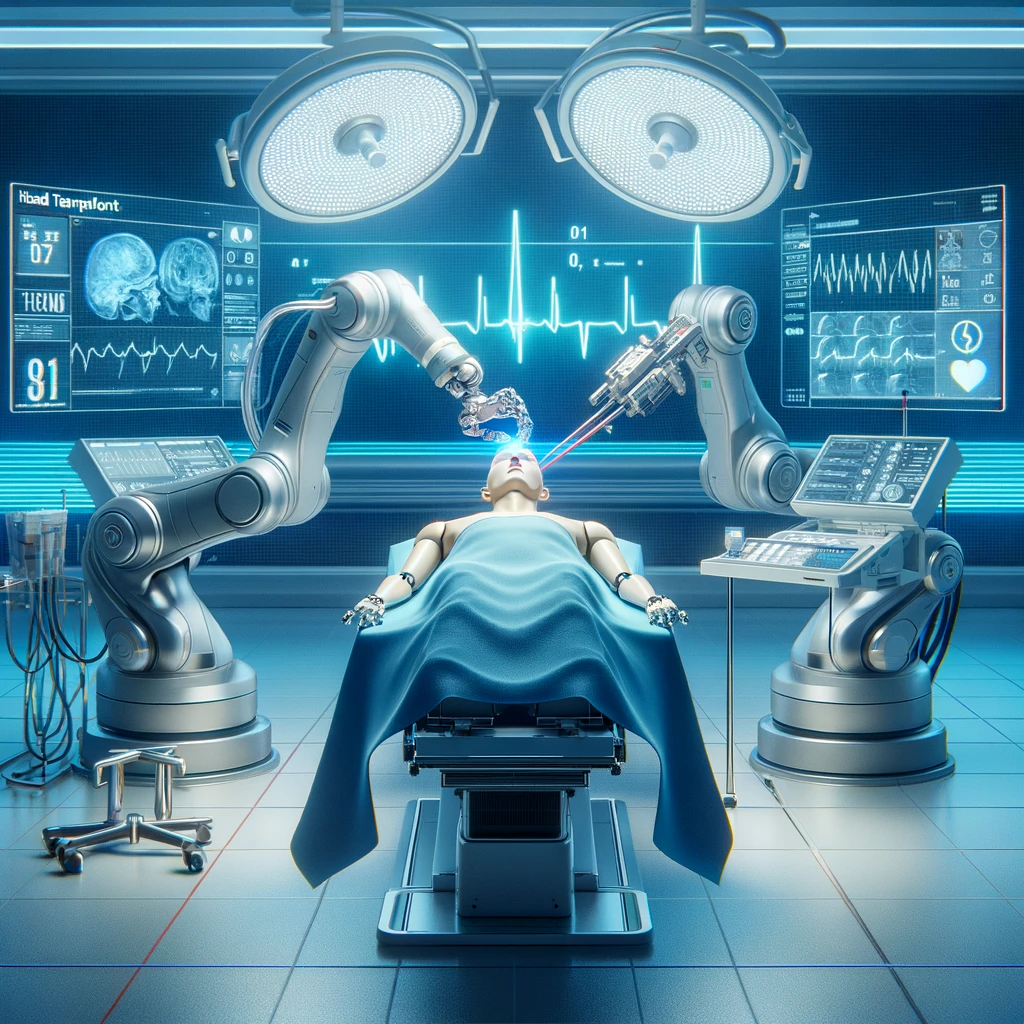A Bold Vision for the Future of Medicine
Robotic head transplants may become a reality within the next decade, and this development could redefine the boundaries of medical science. Hashem Al-Ghaili, a Berlin-based molecular biologist and science communicator, is spearheading this initiative through his startup, BrainBridge. This ambitious project aims to utilize high-speed robotic systems to perform head transplants, preserving brain function throughout the process.
BrainBridge: A Revolutionary Concept
Al-Ghaili’s previous ventures, such as the artificial-womb factory EctoLife, have already showcased his willingness to push the limits of modern science. BrainBridge represents his latest foray into controversial yet potentially groundbreaking medical procedures. The core idea involves AI-driven robotic arms that meticulously remove a patient’s head and attach it to a donor body. The process involves reconnecting the spinal cord, nerves, and blood vessels using proprietary chemical adhesives and polyethylene glycol to facilitate neuron reconnection.

“I’m thrilled to announce BrainBridge, the world’s first concept for a head transplant system, which integrates advanced robotics and artificial intelligence to execute complete head and face transplantation procedures,” Al-Ghaili declared on social media. This technology, according to him, holds the potential to offer new hope to patients suffering from severe disabilities, such as stage-4 cancer, paralysis, and neurodegenerative diseases like Alzheimer’s and Parkinson’s, by restoring functionality and improving aesthetic appearance.
The Roadmap to Implementation
Al-Ghaili unveiled his ambitious project late last year, presenting an eight-year roadmap leading to the first surgery. This timeline addresses significant challenges in the field, particularly the complexities of spinal cord repair. The initial focus will be on achieving successful spinal cord surgeries, which will serve as a foundation for the more complex head and body transplants. This detailed plan demonstrates the project’s commitment to thorough preparation and careful execution.
BrainBridge, recognizing the significant challenges ahead, plans to recruit top medical talent and collaborate with leading neuroscientists and engineers. The project’s success hinges on significant advancements in robotics and medical science, particularly in precision surgery and neuron reconnection, underlining the urgency and importance of this endeavor.
Current State of Medical Science and Skepticism
The medical community has been notably quiet in response to the announcement of BrainBridge, likely due to the controversial history of head transplant proposals. In 2017, Italian doctor Sergio Canavero promised to perform the world’s first head transplant but only managed to conduct surgeries on cadavers. This failure has left many in the medical field skeptical about the feasibility of such procedures.
Despite the skepticism, Al-Ghaili remains optimistic. BrainBridge’s website outlines the potential benefits of face and scalp transplants, including restored functionality and improved aesthetic appearance. The use of younger donor tissues aims to reduce the risk of rejection and enhance healing, supported by meticulous suturing and comprehensive post-operative care.
Technological and Ethical Challenges
The concept of head transplants is fraught with both technological and ethical challenges. Technologically, the primary hurdle is the successful reconnection of the spinal cord and neurons. Current medical science has not yet mastered spinal cord repair, making this a critical area of focus for BrainBridge. AI and advanced robotics are expected to enhance precision and reduce the margin of error, but these technologies are still in developmental stages.
Ethically, the idea of head transplants raises numerous questions. Issues such as donor consent, the definition of identity, and the potential for long-term psychological effects on patients are all areas that need thorough examination. Additionally, the potential for socioeconomic disparities in access to such advanced medical procedures could exacerbate existing inequalities in healthcare. These challenges underscore the need for careful consideration and thorough research in this field.
Future Prospects
Al-Ghaili’s vision for BrainBridge includes head transplants and comprehensive post-operative care. The BrainBridge Head Band, equipped with a Brain-Computer Interface, will allow patients to communicate their needs during recovery, control devices, and perform tasks independently using their thoughts. This technology aims to enhance patient autonomy and improve their quality of life post-surgery.
Although BrainBridge is currently in the conceptual phase, its potential impact on medical science cannot be understated. If successful, this project could offer unprecedented treatment options for patients with severe disabilities and chronic conditions. However, the road to implementation is long and fraught with challenges.
As Al-Ghaili and his team at BrainBridge work towards making robotic head transplants a reality, the world watches with a mix of skepticism and hope. The success of this project could revolutionize the field of medicine, offering new possibilities for patients with previously untreatable conditions. For now, the focus remains on overcoming the significant technological and ethical challenges that lie ahead, with the ultimate goal of transforming lives through advanced robotics and artificial intelligence.
Like this article? Keep up to date with AI news, apps, tools and get tips and tricks on how to improve with AI. Sign up to our Free AI Newsletter
Also, come check out our free AI training portal and community of business owners, entrepreneurs, executives and creators. Level up your business with AI ! New courses added weekly.
You can also follow us on X